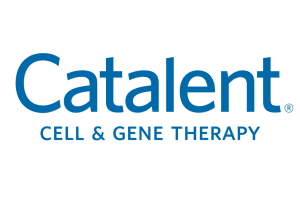
It’s just over 30 years since the first approved gene therapy procedure was performed – and I’m sure we’re all amazed at how the field has progressed since then. The FDA expects approvals for cell and gene therapy products to reach around 20 per year by 2025 (1). A key component enabling the growth of the field of gene therapy is recombinant adeno-associated virus (AAV) vectors. There have been three recombinant AAV-based gene therapies approved for commercial use so far (2), and there are hundreds of active clinical trials worldwide for a variety of diseases.
As development of gene therapies increases, there is a growing demand for accurate and efficient techniques for characterizing AAV vectors. Many existing methods for analyzing AAV vectors, particularly for determining the full/empty capsid ratio, are labor-intensive and time consuming. Analytical methods using anion exchange (AEX) chromatography, however, are supporting the analysis of AAV capsids and could be a key technology for further advancing gene therapies.
Viral vector characterization is essential for assuring product quality. Critical quality attributes (CQAs) include viral potency, identity, quantity, process residuals (i.e., Triton and deoxiribonuclease), aggregation, empty capsids, capsid protein content, and product safety. To meet purity requirements the proportion of empty, partial, and full AAV capsids must be determined. Unsurprisingly, full capsids are required for therapeutic efficacy; empty capsids, which do not contain genetic material, or partial capsids, which contain only a fragment of the genetic material, are simply by-products of AAV production and can negatively impact product efficacy and safety – potentially producing adverse reactions, such as an immunogenic response in the patient.
There are various analytical methods for characterizing capsid levels in the laboratory, including transmission electron microscopy (TEM), analytical ultracentrifugation (AUC), charge detection mass spectrometry, and UV spectrophotometry. The two main methods are TEM and AUC. TEM involves a sample vitrified by rapid freezing to preserve the structure of a biological specimen. When imaged, there is a clear difference in structure between full and empty particles. The AUC method distinguishes and quantifies the different AAV capsids either by density (sedimentation equilibrium) or mass (sedimentation velocity).
As AAVs are relative newcomers in gene therapy, the industry has not yet decided upon the most effective method of analysis. Certainly, existing methods for determining the full/empty ratio of AAV capsids have limitations; for example, TEM provides direct visualization and counting of the empty and full particles, but quantification heavily relies on image quality and field selection.
And although AUC has excellent resolution and is highly accurate, it often requires a dedicated facility and specially trained analysts, who must spend hours on data interpretation. Moreover, AUC also consumes hundreds of microliters of valuable samples.
In short, TEM and AUC are both low throughput – and neither is readily scalable.
Formulation and Characterization Strategies for Gene Therapies
Gene therapy product formulation studies are currently limited in scope. Hear our expert discuss how we're working towards establishing formulation selection criteria using traditional techniques and evaluating novel methodologies.

In my view, AEX chromatography is a useful technique for the analytical toolbox. When genetic material is encapsulated in the capsid, the surface charge on the particle changes. This physiochemical difference between full and empty capsids makes them ideal for analysis with AEX chromatography methods. AAVs are also small (20-25 nm) and suitable for both traditional and monolithic columns.
The AEX chromatography method requires only several microliters of material – clearly a real benefit when gene therapy samples are so precious. Furthermore, no sample preparation is needed, which simplifies the analysis and increases throughput.
Historically, use of the AEX method for separation of empty, full, and partial capsid was less than optimal due to analysts narrowly exploring anion exchange column chemistries. For example, a user may begin method development with a column that would be recommended for nucleotide analysis because this would work well for characterizing genetic material inside the AAV. However, this same column chemistry may not be best suited to separate empty, partial, and full capsids. Today, chromatographers have learned they need to search across multiple column chemistries to find the solution that provides the best resolution for empty/ full capsid separation.
Right now, AUC provides the better resolution, but I believe that ongoing developments with AEX column chemistries and chromatography systems make it a technology to watch for the future. Chromatography systems are already up and running in the QC environment for other processes and specialist expertise is not needed. Also, chromatography lends itself well to automation opportunities, opening the door for high-throughput capsid analysis, ultimately providing a more cost-effective way of speeding up product development and reducing time to market.
References
- FDA, “Statement from FDA Commissioner Scott Gottlieb, M.D. and Peter Marks, M.D., Ph.D., Director of the Center for Biologics Evaluation and Research on new policies to advance development of safe and effective cell and gene therapies,” (2019). Available at https://bit.ly/3ryl9mp
- FDA, “Chemistry, Manufacturing, and Control (CMC) Information for Human Gene Therapy Investigational New Drug Applications (INDs),” (2020). Available at https://bit.ly/3t728b6




